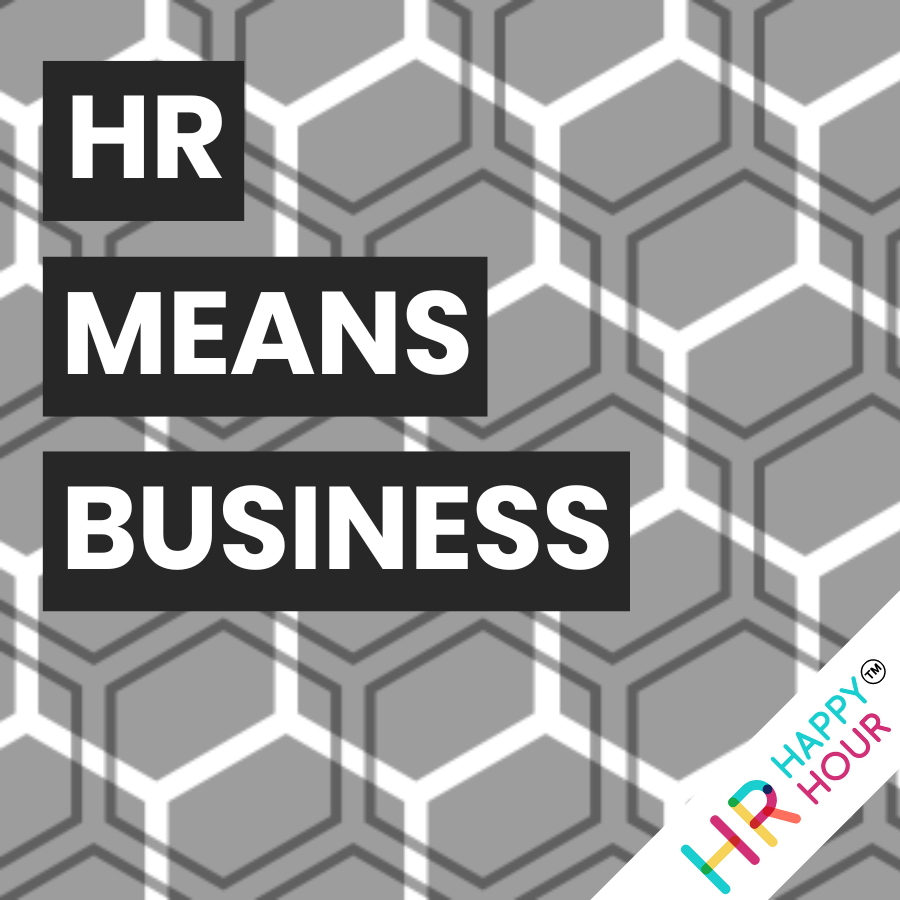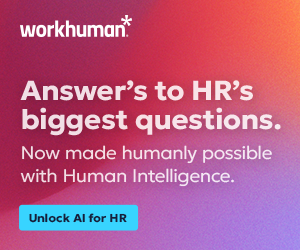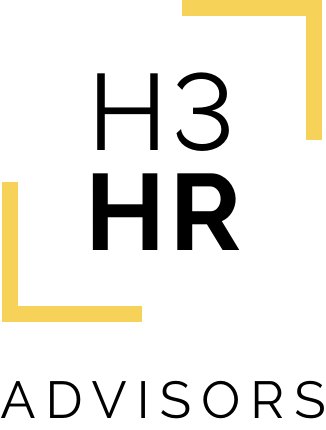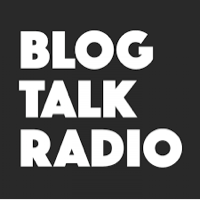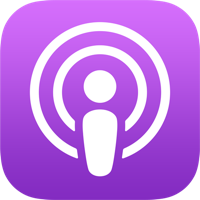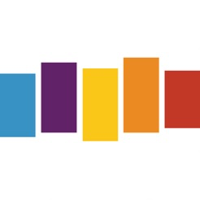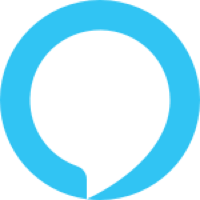Understanding Employee Experience and the Moments that Matter
Hosted by

Mervyn Dinnen
Analyst, Author, Commentator & Influencer
About this episode
Understanding Employee Experience and the Moments that Matter
Host: Mervyn Dinnen
Guest: Nicky Hoyland, CEO and Co-Founder of Huler
In this episode Mervyn Dinnen talks to Nicky Hoyland, CEO and Co-Founder of Employee Experience platform Huler, about the increasing focus on retention, engagement and experience. During the conversation they discuss:
- The growing focus on Employee Experience and Employee Engagement
- Defining and understanding the moments that matter to our people
- Simplifying tasks
- The role that technology plays in enabling the Employee Experience
- Generational perspectives on Experience and Engagement
- How HR teams can identify the key moments their people care about
Thanks for listening! Remember to subscribe to all of the HR Happy Hour Media Network shows on your favorite podcast app!
Transcript follows:
Mervyn Dinnen 0:18
Hello, and welcome to the HR Means Business podcast, which is part of the HR Happy Hour Network. I’m your host, Mervyn Dinnen. 2024 very much is the year of employee engagement employee retention experience. And I’m delighted today to be able to talk to Nicky Hoyland, who is Co-founder of Huler to get her take on employee experience, how it’s evolving and what I suppose the big trends are for 2024. So Nicky, would you like to introduce yourself and tell people a little about your background? And about Huler itself?
Nicky Hoyland 0:59
Yeah, of course. So thank you for having me. Looking forward to the conversation. I think I completely echo as you said that this is the year of experience and engagement and retention and doing things differently. As you say, I’m the co founder and CEO, Huler, we’re our work technology tool. I truly believe in consumer grade, personalized experiences inside of work and the impact that that has. Some would say I’m quite a nerd, and a bit of a geek for the for the space in the area. And yeah, just looking forward to dig it in and talk a little bit more.
Mervyn Dinnen 1:35
Okay, so I suppose the first question would be, given the focus on I suppose the most workplaces at the moment is how best to retain and engage? What is it about the world of work? What is it in the workplace that tech can do? To really I suppose engage?
Nicky Hoyland 1:54
I think it’s a first it’s a really interesting jumping in point that I think the employee experience helps to then further employee engagement. So the measure that you want here is around what is that engagement level, but that is delivered in the medium of, of what those experienced touch points are. One of the things I tend to do quite a lot is reference, how customer experience and how employee experience mirror are very, very similar. And so much of the time in our organizations will spend time looking at how do we engage with potential customers or prospects? How do we then make sure that those folks are loyal to our brand? How do we continue in engaging with them and have them buy from us and so on? And then unfortunately, how do we avoid them leaving the brand or choosing to go somewhere else? So this is a really, really easy narrative that to go right. Let us look at how we echo those touch points inside of the ex employee experience. I think it’s safe to say and I appreciate the irony of me saying this given I’m the CEO of a word tech firm as well, that it isn’t just about digital tools. And anybody that’s looking at this challenge and going I’ll just put in some more systems, I think is needed to probably step back and look at what are they trying to solve. I think the interesting part, though, to your point of how technology can help is the those moments and those touch points to be able to do that personalized consistently. And that scale is really difficult to do without technology. And without something that makes a seamless experience of touch points inside of different moments of tenure inside of an organization. That, as I say, to try to do that, without tech becomes quite complex and quite difficult, quite challenging. It’s not equitable and fair. It doesn’t, you know, it can often divide, folks. Whereas if you’ve got something that’s intentionally designed, and intentionally implemented, again, understanding what your challenges are and your why. That’s a very different approach to how technology helps rather than just like, throw another system in the mix, which I don’t think is is always the answer.
Mervyn Dinnen 4:16
I yeah, I was speaking at a conference yesterday. And whenever I’m talking about experience, I was talking about moments that matter. And it’s identifying the moments that matter whether it’s its job candidates going through an interview process, or I suppose more along the lines of what we’re talking about today, its employees, what are the key interactions and touch points which effectively lead towards them feeling engaged, feeling positive about their surroundings and the organizations and not so what would you say I suppose the key moments that matter during the working cycle?
Nicky Hoyland 4:51
Again, a really good question. I think, for me this maps before somebody even chooses to join the organization, and importantly getting there consistently, right? And understanding all of these touch points across the various folks inside your organization that own those touch points, I think is important. It has to feel like a journey, it has to feel like something that’s been intentional, intentionally planned. And by having many, many different pockets of people that look after those different moments, it becomes very disjointed very quickly. So firstly, I would say, it’s worth mapping that out and having the right people around the table to do that, again, in the same way as you would do if that was customer experience, right. But looking at that, before somebody applies a why might they want to come and work at your organization equally? And some real honesty around? Why might they not so that the candidates that you are attracting are the correct ones for for the role, and there’s an openness? And there’s an honesty about that through to what to expect to interview through to What does pre boarding look like? What does onboarding look like? What does that in life experience look like? It was interesting in a few weeks ago, we did a an exercise with a client where they did a survey to ask the managers where do you go to to get training outcomes content? And not one manager answered the question consistently, which was interesting. Every single manager named the tools something differently. Or they pointed somebody to the wrong tool, or an outdated tool or an outdated deck that they had had from years ago. And fundamentally, one of the things we talked about was, let’s look at what we’re trying to solve. So the piece there around, you ask me, what are some of those moments that matter? That might be something simplistic like, I want the ability to be able to book annual leave? Now do I need to know the name of the system and we could all add, the big vendor box system that we use for our HR is or wherever we do that, that’s not the name of the thing that you want to do, the name of the thing that you want is book annual leave. So insider a sea of work where I’ve got more and more tasks that I’m taking on I’m context switching between different systems, actually, to add more cognitive load to that task of just want to book annually. And what we’re asking our employees to remember is what system they need to go to, what’s the name of it, what’s the login, what’s the username, how do they then navigate those 16 clicks to get to Lo and behold, book an annual leave, which then might need to go through an approval process or otherwise. But in that moment, all I want to do is book leave, all I might want to do is submit expenses, or something similar and this challenge that we have of there’s more and more and more cognitive distraction that’s added through tools and technology that we use is a real challenge.
Nicky Hoyland 7:53
So trying to look at those employee journeys that you have in your organization that we could probably talk for hours about different persona types and what those personas look like, regardless of your dependent on your role, or where you’re based or tenure in the workplace. And then looking at what are those key areas? Throughout that whether that’s their working day, week, month, year, whatever that looks like? When you’re then considering that journey? How do you try to personalize that as much as possible? Again, remembering at scale that can be a challenge, and which is where technology helps. But how can you personalize it? So I feel like a human being in that process? Because for me, when we talk about experience, if we strip it right, right back to what does experience mean? It’s an event or an occurrence that leaves a lasting impression on me, right? I’ll remember how I felt, I might not remember what I was told or exactly what was said. But I’ll remember how I felt about it. So if that that process that I was trying to do or that moment that matter, matters, added stress, cognitive load, it was something that I just didn’t have the time to do. It felt cumbersome, it felt clunky, It distracted me. Actually, the feeling that I’m left with is Oh, I feel a bit flat. I feel a bit wasn’t the experience I wanted. So I think in a I’ve mentioned a lot of touch points that have a dream experience and customer experience and what experience genuinely is. But I think trying to find those those core moments in those employee journeys. Having the right people at at a table to discuss them is important. I appreciate that, sir. can be seen as a really big task as well. But breaking that down and where do you want to start? Where’s your jumping in point, actually what you’re trying to solve for first, is that an onboarding experience? Is it the process of just finding leave? Is it the how are people collaborating together? Find that, that that that rub point, that thing that’s causing pain and hurt other people, listen to them, ask them see You back to them what you’re going to do. But that’s how to carve out those those moments that matter across the organization.
Mervyn Dinnen 10:07
And of course, moments that matter differ from, I suppose worker to worker employee to employ. Some of the, you mentioned the booking leave, for example, which is none, I always like to look at nice straightforward processes we can all understand. To some people, it’s a complete, faff. But others might kind of just, you know, it, it’s what they expect, but something else might not be what they expect. We’re all humans within the organizations at the moment, obviously, the AI is there as well. But we’re all humans. And so we, I suppose, have different perspectives on on? What’s a great experience and what isn’t. So how, thinking more from your, I suppose angle as co founder of a tech solution? How do you speak to the companies who are investing in Huler? As to, I suppose, differentiating between the moments and kind of an understanding?
Nicky Hoyland 11:09
Yeah, I think, firstly, you’ve hit the nail on the head, you’ve got to understand your audience. So again, before you look at the solution, and the technology, what are you trying to solve? What are those problems, problem statements that are coming back? What are they? What is that feedback? What it where is that friction occurring? I think you also raise a really good point around expectation. So I believe that we’re seeing generational change in technology expectations inside of work. So, and there’s many surveys at the moment, some of which I’m sure we can reference in the show notes around generational mindset and confidence in tools. And actually, the younger generations and millennials, Gen, Z, Gen Z, and so on, I’ve got a much higher confidence in the ability to do their job inside the tools that they’re using, but less confidence in the way those tools are deployed, or the tools that are selected. Whereas older generational mindset would suggest more that there there’s a fear to some of the tools. And there’s an expectation that the tools are clunky. So I think we can no longer really rest on this. Yeah, but it’s work tech, and people expect it to be that way. They expect it to be a clunky experience, they expect it to add more clicks, more touch points not be as engaged in not be as personalized as something that I call it consumer grade tech, but what do I expect on my personal device or inside of a streaming service that I’ve got or an online platform? I think that’s changed. I think there is an expectation now that this this difference isn’t as as tolerated. And we are seeing a change inside of work technology that that’s far more focused on the either UI. So user interface, or UX user experience of what does that really look like? So I would say, again, a real understanding of what are those those problem statements? What are the challenges? And how is that different both from the role that I’ve got, as I say that the time I’ve been in the organization, the device I access on what I’m trying to do at any given time. This, for me comes in a lot to the conversation when we when we look at and I’m trying very hard to stop using future of work. Think future of work suggests that it’s far away.
Nicky Hoyland 13:37
It’s been happening for years, like if we, if we keep talking about this future state and flying cars, and so on and so forth, people will be less bothered about dealing with it right now. We need this needs to be addressed. Now. you’ve commented on my posts last week, as workers all work, right, whether it’s hybrid, whether it’s flexible, whether it’s in person, it’s work, period, and flexibility fits everybody. So there isn’t a one size fits all. And I think we need to get out of this debate of should it be there should be this. There isn’t. There just isn’t ever going to be this miracle. This is the magic formula. But when we talk about flexibility of where people work, how people work when they work, and then indeed, who by putting all of those components together inside that persona mapping and understanding what you need to address, I think is that this is how we then start to firstly, I guess adopt new ways of working, evaluate them, learn from them, and be okay that they need to tweak or change and that actually we probably need to upskill managers, and we probably need to upskill teams to be able to work differently. And that applies to tech. It applies to the task at hand. It applies to how they do collaboration and in person collaboration. But importantly, it’s all very intentionally designed, rather than that But we’ll just keep talking about the future of work as if it’s some kind of far, far flung event that we don’t need to be thinking about right now. So yeah, I think I think there’s a lot going on there for people to get their heads around, of course. But again, that jumping in point of what are the pain points? And by surveying folks and listening to folks, you will soon find out what those pain points are pretty quickly.
Mervyn Dinnen 15:24
Yeah, it’s understanding. I suppose what you know, we’ve talked about the moments that matter before is understanding what’s important to your people, which will be different depending on the role they do the background, age, all those different things perspectives. One of the things that I talk about is how, I mean, I fell in love with recruitment, we’ve been through various phases from the beginning of online to social, we’re in the intelligent era now because you know, you can’t read 10 words without the words AI. Somebody’s saying that’s it. The the, I suppose the next phase, as far as I’m concerned, and most of the research I’ve done with my co author, Matt, has been around personalization. So are you seeing, looking at what we’re talking about the experience, the employee experience, the moments that matter is increasing levels, I think of personalization to individuals in basically, how they interact with the tech and how they can use it to, I suppose achieve the results they particularly want from it.
Nicky Hoyland 16:31
Yeah, yeah. 100%, I think, if we look inside, again, flip into the consumer lens, and what does that look like for for customers. If I have clicked on something, that advert, or that company is going to follow me around, it’s going to target deals with me, it’s going to target reviews at me, everywhere I go, I’m going to see touch points of that it’s going to engage with me, I only need to log on to a platform that I’ve been into before and had some form of history, to have a very tailored experience that suggests this is what you might want next. And it hooks me into that process of rather than needing a notification that says, right, this is how I’m going to pull you back, it pulls me back through habit, it pulls me back through understanding what I’m going to want a certain time and so on. So I think that personalization, and again, that’s can be a challenge at scale with with tools like what we do inside of hula hub, we make that easy, we make that so you can define audience groups that goes this is what you might see need to see at this time. I think personalizing both the business for the audience and then allowing me as a as a user. And it’s only the technology industry or the drugs industry that call people users. But let’s call it human beings, right. So as a human being what might I want to personalize. So might that be that I want to see thing that curator workspace that makes sense to me and in our world as my tiles that those images feel relevant to me. So they might be my family, friends, cats, football teams, or otherwise, I’ve curated a workspace that makes sense, I can collaborate with colleagues and peers and managers and so on in a space. That makes sense. But there’s that expectation. Again, to come back to that generational shift. I think there is far more expectation around personalization now of how do you curate and create experiences that don’t just see me as a number. They are tailored to me again, in those moments that matter? Because there’s no point in doing a moment moment that matters. In something that’s personalized. It’s not relevant to me, because otherwise it’s like, Okay, that’s great that that’s been shown to me, but I’m not interested. And actually that probably wastes time or screen real estate. So on understanding that, and, and that hyper personalization, I think is, is you know, is is hella important inside that journey.
Nicky Hoyland 19:04
And, as I say, from an experience journey for you to map that similar to customer experience that is going round and round, it isn’t a start to end. We’re seeing boomerang employees and folks coming back. And again, that’s because we’re still personalizing content and reaching them with content that says, Well, why would you want to return and now you’ve gone away and got additional skills or expertise elsewhere, you’re probably one of the best place people to come back and now step into this role. Again, I think, inside our sector and in the industry, there’s a lot of as you say, you can’t you can’t move for the word AI everywhere. I think I think that’s becoming true of experience and personalization and touch. And I think it’s important for us to really, really pull back to what about that product or thing or she Joe or webinar or whatever it is, is always talking about experience or offering experience, how is it then being personalized, both, as I say, to the business, to the audience group or the user group, and then to me as an individual and as a human being, and having those three layers of personalization is important, because that’s given you what the business needs you to know. And then you as a human being and as an individual, what’s important to you inside those, those those moments? I think when you look at the sheer amount of tech that people are bombarded with so reworked released a report, I think about three or four weeks ago saying that the average amount of SAS tools now in any one business is 300 300. And on average, Asana released this that an individual checks email at least 77 times a day. And then, on average, I know Mine’s more than this, but gets on average, about 120 emails a day. So without having to see the notification, we’ve got this habit of go check, go check, go check, go check. And this cognitive overload, then across 200, SAS tools is too much in burns people out. So trying to personalize what do you need when you need it really helps to reduce that that cognitive load and ultimately makes people more productive and successful in the task that they’re there to do.
Mervyn Dinnen 21:27
So what would you the audience for this podcast is primarily HR people? So anybody listening now, I mean, what would your advice be to, I suppose an HR team, who maybe are early part of this journey, or maybe trying to, I suppose improve in some way the kind of engagement experience within their organization because they’ve done their surveys, they’ve done their their end of year, we’re having this conversation, the beginning ish of a new year. So there might be kind of one of the projects this year is to kind of improve these things. Where would you advise them to start? Or how would you advise them to start?
Nicky Hoyland 22:07
It’s really interesting question. And again, I don’t think there’s a one size fits all. But what I would say is, if you’ve done the the research of either, whether that’s surveys, whether that’s data that you’ve got, I’d start with something simple. So it’s very difficult, and I don’t think anybody, and I’ll be corrected, if I’m wrong, anybody walks into either a new role, or they get given a brief that says, you know, what, you can repair every single piece of tech and every touchpoint that we’ve got, you can solve people getting their machines and emails on day one. And you can solve everything kind of overnight, I just don’t think it’s its reality. What I would say is tackle some of the start to tackle some of the low hanging fruit first. So some of those quick wins. Importantly, where you’ve had feedback from folks saying, this is a big burning problem for us are this really great. So this is a moment that matters that we don’t get right. Do a bit of you said we did. So even if that’s really, really low touch point, and that’s nothing, you’re not reinventing the wheel overnight, but you just go in today, what we’ve changed that in order to get to booking annual leave, we just made that really, really clear. We don’t say the system name, we call it what it is, it is what it says on the tin as an example. Look at some of those, those those low, low hanging fruit, but communicate back. So this is some of the changes that we’ve made. And these are some of the things we’re going to tackle next. And we’d love to engage with our people to look at, you know, what, what should we tackle them? And where next? I think, again, tools like ours have will bring something into one space to bring in everything that you’ve gotten go through a consolidation exercise or go through a review exercise of goes, what tools doing and don’t we need? are we offering personalized experiences in something that feels consumer grade, that doesn’t need an 18 month implementation cycle, because I can guarantee you that in 18 months time, things will have changed massively. The longer that takes the more out of daily that you already are.
Nicky Hoyland 24:17
And then I think it would be wrong of us to not touch on AI. In my view, and for the many conferences I attended last year from speaking to clients, prospects and other vendors that are doing brilliant things in the space. There’s a lot of confusion, there’s a lot of noise of what AI is and the fear behind it and what it could be and so on. I’d say sit down with your data team, sit down with the IT team understand even if you wanted to implement technology now and you know what the use case is? Is your data in a space and is your infrastructure in a space that that’s defendable, and you would know why a decision has been made. Are you looking at your AI decisions ethically? And an understanding the point of view of what you’re trying to solve? And when and why? And have you got the right people around around the table? I do think that it’s important with any vendor that you are talking about what your AI strategy, but it’s okay to not know that, you know, in two weeks time, you’re going to have aI completely completed and implemented into the organization and living, breathing working. That might be a roadmap both for for vendors, but also for implementation times into organizations. So they would be some of the starting points of low hanging fruit feedback. So you said we did look at something that consolidates into one place and creates that consumer grade, personalized layer, and then be having the right people around the table. So, again, if that’s journey mapping, is that all of those people that are involved in that end to end, and if that’s around tech, and infrastructure, is that your data teams, your IT teams, potentially even legal teams, and you’ve got the right people to be able to start to have those conversations.
Mervyn Dinnen 26:08
It’s been fascinating Nicky, and it’s been really interesting to talk to you. Before we go, I suppose my one question will be getting you to gaze into your crystal ball. And so if I, if we have this conversation again, say in two years time, I mean, I’m sure I’ve been bumping into many times before then. But if we maybe look forward two years, what do you think we’re going to be talking about? What do you think might be coming down the track to maybe change or enhance some of the things we’re discussing now.
Nicky Hoyland 26:45
So say, we’re going to be talking about experience, because in a world where we automate more, and I think that the fear around some of AI is often language, when we when we talk about replace, I think automate and amplify is really important. There will only be things that just happen in the background, more and more things that happen that are expected and they occur for me. But what that will do is put far more focused on experience and how I felt because I am still the human being in this world, I still have emotions and feelings that are complex, and that they’re different and they unique. So I absolutely still believe that personalization will be a key topic of conversation, I think we will have moved past the impact of post COVID. And what does this future world of work look like? We will refer to work as work. But I do think that conversation around, what sort of who and how, and more gig economy and what skills do you lean into at what points and that skills become hierarchies inside of organizations break down or touch because teams are much more collaborative across the organization based on the skills that they have, and that human human connection? Because so much of you know, the the tech future and automation will be in that world of so much of this, you know, dealt with elsewhere. So the more focus on personalization, humanisation and skills and cross collaboration.
Mervyn Dinnen 28:19
Alright Nicky, if people are listening to this and want to know how they can connect with you, or maybe find out more about what you kind of, I suppose think and write about and speak about? How can they connect with you?
Nicky Hoyland 28:30
Yeah, so I’m Nicky Hoyland on LinkedIn. Or you can contact me via Huler. And yeah, I’d love to chat to more folks in this area. I’m very passionate about it, as you can tell.
Mervyn Dinnen 28:49
Okay. Nicky, thank you so much for joining me today. It’s been a pleasure to talk to you and hopefully I’ll be bumping into you at a conference sometime soon.
Nicky Hoyland 28:58
I have no doubt. Thanks for having me.
Mervyn Dinnen 29:00
You’re welcome.
Transcribed by https://otter.ai
Talk to us
If you want to know more about any aspect of HR Happy Hour Media Network, or if you want to find out more about a show topic, then get in touch.

